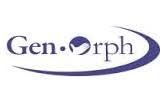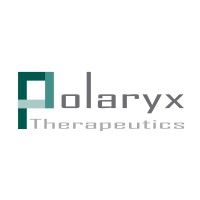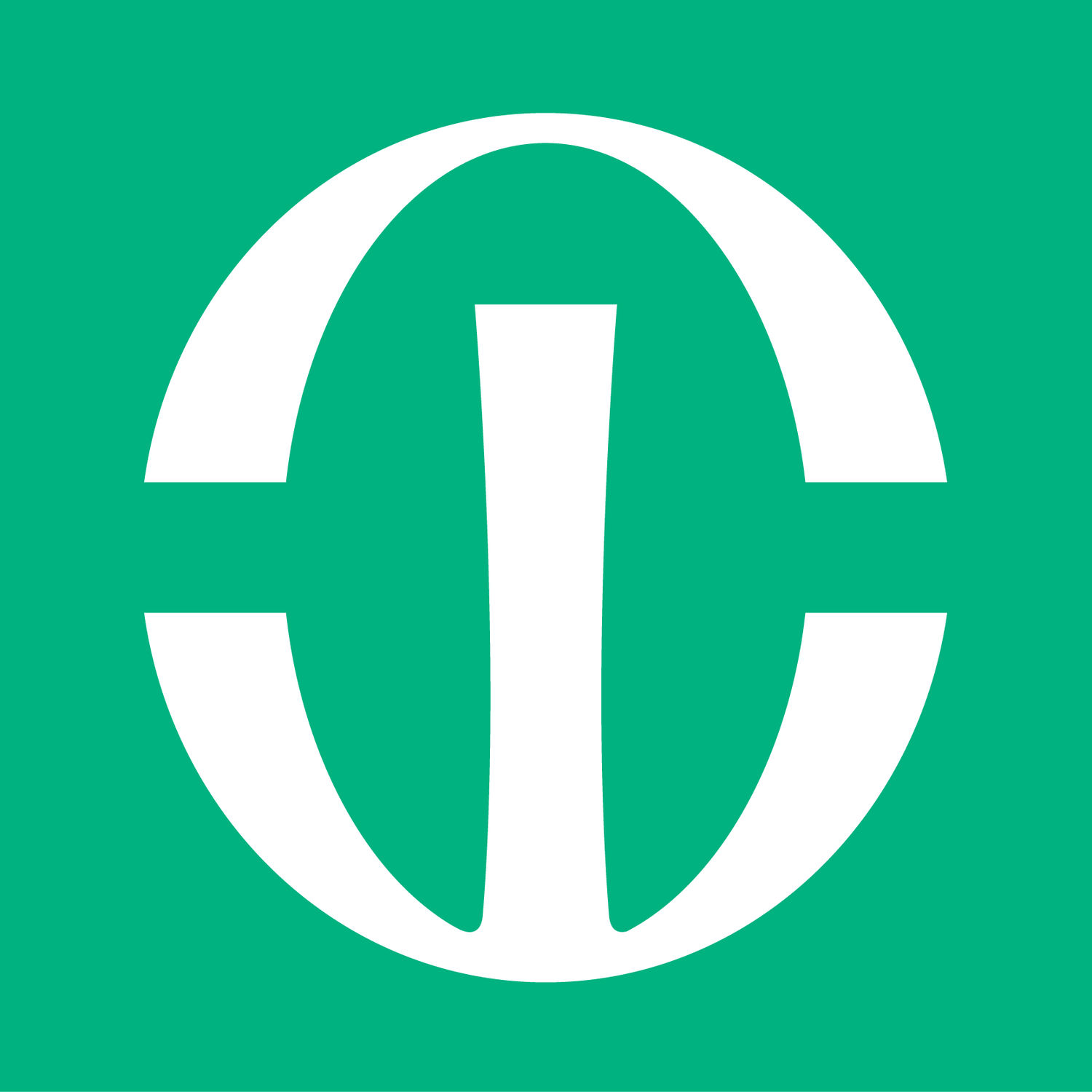预约演示
更新于:2025-05-07
Gangliosidoses, GM2
GM2神经节苷脂贮积症
更新于:2025-05-07
基本信息
别名 Deficiency of beta-N-acetylhexosaminidase isoenzymes、G(M2) Gangliosidoses、GM2 Gangliosidose + [22] |
简介 A group of recessively inherited diseases characterized by the intralysosomal accumulation of G(M2) GANGLIOSIDE in the neuronal cells. Subtypes include mutations of enzymes in the BETA-N-ACETYLHEXOSAMINIDASES system or G(M2) ACTIVATOR PROTEIN leading to disruption of normal degradation of GANGLIOSIDES, a subclass of ACIDIC GLYCOSPHINGOLIPIDS. |
关联
25
项与 GM2神经节苷脂贮积症 相关的药物作用机制 calcium channel调节剂 |
在研机构 |
原研机构 |
最高研发阶段批准上市 |
首次获批国家/地区 美国 |
首次获批日期2024-09-24 |
靶点 |
作用机制 UGCG抑制剂 |
在研机构 |
最高研发阶段批准上市 |
首次获批国家/地区 欧盟 [+3] |
首次获批日期2002-11-20 |
靶点 |
作用机制 TPP1 刺激剂 [+1] |
在研适应症 |
非在研适应症 |
最高研发阶段临床3期 |
首次获批国家/地区- |
首次获批日期1800-01-20 |
36
项与 GM2神经节苷脂贮积症 相关的临床试验NCT06614569
Long-Term Follow-Up of A Two-Stage Dose-Escalation Study to Evaluate the Safety and Efficacy of Bilateral Intraparenchymal Thalamic and Intracisternal/Intrathecal Admin of AXO-AAV-GM2 in Tay-Sachs or Sandhoff Disease
This study is to continue Long-Term Follow-Up of Patients who were previously treated with AXO-AAV-GM2 Gene Therapy as treatment for Tay-Sachs or Sandhoff Disease to follow the subjects through 5 years after their initial gene therapy treatment.
开始日期2024-09-17 |
申办/合作机构 |
IRCT20230711058742N1
The effect of corrective exercises on head and shoulder posture, strength and endurance of neckmuscles in smartphone users
开始日期2023-10-23 |
申办/合作机构 |
NCT05758922
Randomized, Double Blind, Placebo Controlled, Multicenter, 12 Weeks Phase 2 Study to Evaluate the Safety, Tolerability, Pharmacokinetics and Pharmacodynamics of Oral AZ-3102 in Patients with GM2 Gangliosidosis or Niemann-Pick Type C Disease
This phase 2 is a randomized, double-blind, placebo controlled, 12 weeks study with daily oral administration of AZ-3102 aiming to evaluate the safety and pharmacokinetic (PK) profile in GM2 Gangliosidosis and Niemann-Pick type C disease (NP-C) patients. After approval by the country health authorities, a double-blind extension period was proposed to the patients who complete the 12-week study.
开始日期2023-04-24 |
申办/合作机构 |
100 项与 GM2神经节苷脂贮积症 相关的临床结果
登录后查看更多信息
100 项与 GM2神经节苷脂贮积症 相关的转化医学
登录后查看更多信息
0 项与 GM2神经节苷脂贮积症 相关的专利(医药)
登录后查看更多信息
3,202
项与 GM2神经节苷脂贮积症 相关的文献(医药)2025-12-01·Molecular Biology Reports
Imbalance in redox homeostasis is associated with neurodegeneration in the murine model of Tay-Sachs disease
Article
作者: Seyrantepe, Volkan ; Ateş, Nurselin ; Basırlı, Hande
2025-06-01·Poultry Science
Drying methods affected the fatty acids oxidation and bacterial community of traditional dry-cured ducks during processing and its relation with the aroma formation
Article
作者: Qi, Linyue ; Li, Haixing ; Lai, Yikui ; Xu, Liangwei ; Chen, Hongbing ; Liu, Xiaohua
2025-05-01·Journal of Neurology
Late-onset GM2 gangliosidosis: magnetic resonance imaging, diffusion tensor imaging, and correlational fiber tractography differentiate Tay–Sachs and Sandhoff diseases
Article
作者: Toro, Camilo ; Lewis, Connor J ; Johnston, Jean M ; Chipman, Selby I ; Tifft, Cynthia J ; Acosta, Maria T
119
项与 GM2神经节苷脂贮积症 相关的新闻(医药)2025-03-19
BETHESDA, Md., March 19, 2025 /PRNewswire/ -- Celebrated clinical geneticist Stephen Cederbaum, MD, PhD, FACMG, has been named the recipient of the 2025 ACMG Foundation for Genetic and Genomic Medicine's David L. Rimoin Lifetime Achievement Award in Medical Genetics.
A founding member of the Society for Inherited Metabolic Disorders and the American College of Medical Genetics, Dr. Cederbaum is now a distinguished professor emeritus of Psychiatry, Pediatrics and Human Genetics at the University of California, Los Angeles (UCLA). During the height of his career at UCLA, he developed a clinical program in inborn errors of metabolism and, alongside it, became a leading expert on urea cycle disorders, most notably arginase deficiency, a disorder in which the body lacks the final enzyme in the urea cycle and is, therefore, unable to rid itself of excess ammonia. Dr. Cederbaum worked on enzyme therapy for the disorder, which remains a focus of ongoing research.
From his first exposure to arginase deficiency in 1972, Dr. Cederbaum devoted decades to outlining the biochemistry and pathology that underlie the disorder, as well as identifying successful therapies to treat it. He developed animal models that enabled the exploration of gene replacement and other early therapies for arginase deficiency.
"As a physician-scientist, [Dr. Cederbaum] identified the genetic basis and mechanistic consequences of arginase deficiency and the role of arginine metabolism in multiple disease conditions," said Brendan Lee, MD, PhD, chair of Molecular and Human Genetics at Baylor College of Medicine. "As such, he traversed classical biochemistry, mouse genetics, human genetics and clinical research/care. I had the privilege of meeting Dr. Cederbaum when I started my independent career at a meeting at the Urea Cycle Disorders research conference. His scientific insight—and wit—stood out to all, and his style of self-deprecating leadership in science and medicine has likewise been appreciated by both colleagues and trainees."
Dr. Cederbaum did not limit his efforts to academic or clinical practice. He was also a keen advocate for public health, sponsoring a bill in California to include adults with inborn errors of metabolism in an existing Genetically Handicapped Persons Program. Dr. Cederbaum's efforts also spurred the broadening of mandated newborn screenings to include mass spectrometry, and he founded the California State Genetics Disease Branch Newborn Screening Guidelines Committee. Amid these accomplishments, he also found time to launch a support group for parents, which is now the ARD1-D Foundation; the organization now supports people with arginase deficiency and their families. He also served as an advisor to the National Urea Cycle Disorders Foundation, as well as mentoring and supporting students and colleagues.
"His work ethic and humility stand out. Despite a long list of achievements, Dr. Cederbaum attributes success to his teams and colleagues. His dedication to patient care and advocacy is exemplary, with significant efforts to improve care in underserved regions, particularly in Latin America," said Marshall L. Summar, MD, ABP, ABMGG, CEO of Uncommon Cures LLC and Professor of Pediatrics at George Washington University.
Dr. Cederbaum sees his connectedness more simply: "People mattered, and I always understood that one of the joys of clinical practice is just meeting people, getting to know people, the one-on-one," he says. "It may be that I'm an extreme example of someone for whom human interaction is very important, but I also always understood that my patients suffered from terrible disorders and that it really mattered how you interacted with them."
A productive investigator, Dr. Cederbaum has authored or co-authored more than 180 peer-reviewed publications and more than 90 book chapters and reviews alongside his duties as a physician. Those publications include a study detailing the development of a mouse model for arginase deficiency (and gene transfer in those mice), cloning and characterizing the human and mouse types I and II arginase genes, and comparing the properties and functions of different arginases.
"His combination of basic science and clinical research is almost unheard of in today's environment of ultra-specialization and sets him apart as both a pioneer and role model to the field," said Jerry Vockley, MD, PhD, chief of Genetic and Genomic Medicine and director of the Center for Rare Disease Therapy, UPMC Children's Hospital of Pittsburgh.
Dr. Cederbaum's research has not only defined the diagnosis and treatment of arginase deficiency but also opened new avenues of understanding the role of arginase activity in endothelial and breast cancer cells. Outside arginase investigations, he is responsible for identifying Letterer-Siwe Disease as an immunodeficiency instead of a malignancy and for defining and developing effective therapies for pyruvate dehydrogenase deficiency, a rare disorder sparked by lactic acid buildup.
Dr. Cederbaum built the foundation for his career with an undergraduate chemistry degree from Amherst College in Massachusetts in 1959, followed by a medical degree from New York University in 1963. A yearlong leave of absence before his MD allowed him to pursue bacterial genetics research at Massachusetts General Hospital. With his doctorate in hand, he completed a two-year internal medicine residency at Washington University, St. Louis, and then studied bacterial biochemistry at the National Institutes of Health.
He returned to medical genetics with a 1970 fellowship at the University of Washington in Seattle. The following year, he joined UCLA, where he was a contemporary of the late Dr. Rimoin, for whom the current award is named. Dr. Cederbaum spent most of his five-decade career at UCLA, where he remains active today as a board member of the university's Faculty Club.
Like many early-career researchers, Dr. Cederbaum knew the importance of choosing his research specialty. A lifelong lover of literature, he instinctively sought what Robert Frost termed "the road less taken." After meeting a few families impacted by arginase deficiency, he recognized that the disorder was poorly understood and began considering this new research path.
"It was a road less traveled and an area in which I could make unique contributions. I started out having no real insight into how viable a long-term problem it was," he said. "It turned out to be one that could sustain a career for 50 years … so it turned out to be very fortunate, though I didn't have that kind of insight at the time." Dr. Cederbaum's mentees continue to pursue these studies.
Before being honored by the ACMG, Dr. Cederbaum received the Sherman Mellinkoff Award, the UCLA School of Medicine's highest honor; the Edward A. Dickson Emeritus Professorship Award, UCLA; the National Organization for Rare Disorders Rare Impact Award; he was the Arno and Gretel Motulsky Lecturer, University of Washington; and was a distinguished visiting professor at the Universidad National Autónoma de México.
"Dr. Stephen Cederbaum's remarkable contributions to the field of inborn errors of metabolism and newborn screening, with an emphasis on disorders of the urea cycle make him a well-qualified winner of the David L. Rimoin Lifetime Achievement Award," said Dr. Ann Garber-Rimoin, Dr. Rimoin's widow. "Using various forms of gene and mRNA therapy, his research has used both patient and animal models to improve clinical care, and to significantly impactnewborn screening policy. More recently, his research interests have been directed to the pre-symptomatic DNA screening for late-onset autosomal dominant disorders. Beyond his outstanding laboratory and clinical achievements, Dr. Cederbaum is known as a dedicated teacher and mentor, as well as a founder and supporter of patient support groups for patients with arginase deficiency. His kindness and genuine care for his patients further enhance his leadership role for his students and trainees. The Rimoin family is proud to recognize Dr. Stephen Cederbaum's outstanding career, and to honor him with the David L. Rimoin Lifetime Achievement Award."
"Congratulations to Dr. Stephen Cederbaum for this well-deserved award. Dr. Cederbaum's life and work epitomizes the objective characteristics of the Rimoin award. His passion for teaching, mentoring, and care for patients and their families is admirable. He has championed the integration of clinical genomics care into the healthcare system. We are honored to be able to recognize his achievements," said Nancy J. Mendelsohn, MD, FACMG, president of the ACMG Foundation.
Even after 50 years in the field, Cederbaum remains engaged with colleagues and community members. "To me, it's very important [to recognize] that you can always be better, and it's important to make yourself better," he said. "You're never finished with your obligations to society."
About the David L. Rimoin Lifetime Achievement Award
The David L. Rimoin Lifetime Achievement Award is the highest honor given by the ACMG Foundation. It honors professionals who have made career contributions to medical genetics. Its namesake, Dr. David L. Rimoin, was a pioneer in the field of medical genetics who advanced the understanding of skeletal dysplasia, diabetes and Tay-Sachs disease. A committee of past presidents of the ACMG selects the recipient following nominations from the general membership.
About the ACMG Foundation for Genetic and Genomic Medicine
The ACMG Foundation for Genetic and Genomic Medicine, a 501(c)(3) nonprofit organization, is a community of supporters and contributors who understand the importance of medical genetics and genomics in healthcare. Established in 1992, the ACMG Foundation supports the American College of Medical Genetics and Genomics (ACMG) mission to "translate genes into health." Through its work, the ACMG Foundation fosters charitable giving, promotes training opportunities to attract future medical geneticists and genetic counselors to the field, shares information about medical genetics and genomics, and sponsors important research. To learn more and support the ACMG Foundation's mission to create "Better Health through Genetics," visit .
Barry Eisenberg
[email protected]
SOURCE American College of Medical Genetics and Genomics
WANT YOUR COMPANY'S NEWS FEATURED ON PRNEWSWIRE.COM?
440k+
Newsrooms &
Influencers
9k+
Digital Media
Outlets
270k+
Journalists
Opted In
GET STARTED
2025-02-28
2025 年 2 月 28 日是第 18 个国际罕见病日,今年的主题是 “More than you can imagine”(不止罕见)。在这个特殊的日子里,给大家分享一个为9岁超罕见病儿子“造药”的母亲的故事,希望能启发和鼓舞更多的罕见病患者家庭。
2019年,安安(化名)出现了严重的睡眠障碍,辗转多家医院历经三年终于确诊GM2 神经节苷脂贮积症(AB 型),这是一种发病率仅百万分之一的超级罕见病,曾被称为 “无解绝症”。 发病前期会出现语言不能、肢体不协调、癫痫、视力、听力丧失等症状,多数Ⅰ型患儿在三四岁之前夭折,Ⅱ型患者大多活至十几岁。 面对如此绝境,安安的母亲杨桃在孩子确诊后,用两年时间寻找专家、卖房筹资、跨国合作推进 “孤儿药” 研发。
杨桃的寻药之路充满了艰辛与挑战。2022 年,杨桃找到一名顶尖专家,得到的回复却是推进基因药物研发比登天还难。很多人劝她放弃,但杨桃不忍心。为了寻找可以推动药物研发的机构和组织,她辗转全国各地,但始终一无所获,求药之路一度停滞。
随着时间推移,安安身体越来越虚弱。2022 年,杨桃夫妇四处筹备研发资金,处置房产,向亲友借钱,最终成立生物科技公司开展基因药物研究。杨桃说:“哪怕这件事最后没有成功,但其他人能在我们的基础上继续前行,总有一天这个病会被攻克。”
2023 年,杨桃了解到加拿大一个机构多年前就开展了 GM2 系列罕见病研究。她发去邮件,得到回复并得知对方已成功完成 GM2A 基因药物设计及小鼠实验论证。经过努力,对方同意合作推进研发。2024 年 5 月 15 日,安安成为全球首位接受 GM2A 基因药物治疗的患者。如今,杨桃已开始推动安安第二阶段的外泌体基因治疗研究项目。
作为全球领先的基因治CRO&CTDMO公司,派真生物凭借在基因治疗领域的专业实力和丰富的项目经验,为安安的 GM2A 基因药物研发项目提供第二阶段的临床药物生产,为该项目的顺利推进提供了有力保障。
派真深耕基因治疗领域服务平台逾十载,始终坚持做一家纯粹的CRO&CTDMO,以深厚的技术积累、卓越的运营和高品质的交付,为全球客户提供从早期概念验证、成药性评估到IIT、IND及BLA的一站式CMC服务,以加速创新基因药上市并使老百姓用得起基因治疗。公司提供全方位服务,涵盖质粒、病毒载体和mRNA生产等,支持项目从研究到商业化。此前,派真生物已成功交付8个FDA、12个NMPA IND申报项目。
众多患者家庭也在为罕见病的治疗不懈努力。安安的母亲杨桃,为了孩子的治疗,毅然决然地踏上了寻找专家、卖房筹资、跨国合作的道路。她四处奔走,积极与各方沟通协调,只为推进 “孤儿药” 的研发。她的坚持和努力,为安安带来了新的希望,也为其他罕见病患者家庭树立了榜样。
我们相信,在多方的助力下,安安的 GM2A 基因药物研发项目一定能够取得更大的突破,为罕见病患者带来更多的福音。 让我们共同关注罕见病,关爱罕见病患者,为他们的生命健康保驾护航。
新闻来源:https://app-h5.ngzb.com.cn/shareArticle?news_id=1531726762
关于派真生物
临床申请孤儿药基因疗法信使RNA核酸药物
2025-01-09
Leiden, Netherlands, 09 January 2025 – Azafaros, a company focused on developing treatments for the unmet needs of patients with rare lysosomal storage disorders, today announced that it will present at J.P. Morgan’s 43rd Annual Healthcare Conference on Thursday, January 16, 2025.
The company’s presentation will begin at 8:30 a.m. PT/11:30 am (Eastern Time).
The presentation will focus on the company’s lead product, nizubaglustat, a potential treatment for rare lysosomal storage disorders with neurological involvement including GM1/GM2 gangliosidoses and Niemann Pick type C (NPC).
Positive topline data reported earlier this year from the company’s successful Phase 2 study investigating nizubaglustat in GM2 and NPC patients demonstrated that the compound had a positive safety profile. Preliminary improvements or stabilization of clinical endpoints were observed in the majority of patients, highlighting encouraging early efficacy trends for the compound.
Azafaros is preparing to initiate Phase 3 studies with nizubaglustat in GM1/GM2 gangliosidoses and NPC in Q2, 2025.
About nizubaglustat
Nizubaglustat is a small molecule, orally available and brain penetrant azasugar with a unique dual mode of action, developed as a potential treatment for rare lysosomal storage disorders with neurological involvement, including GM1 and GM2 gangliosidoses and Niemann-Pick disease type C (NPC).
Nizubaglustat has received the following designations and support:
United States Food and Drug Administration (FDA)
Rare Pediatric Disease Designations (RPDD) for the treatment of GM1 and GM2 gangliosidoses and NPC.
Orphan Drug Designations (ODD) for GM1 and GM2 gangliosidosis (Sandhoff and Tay-Sachs Diseases) and NPC.
Fast Track Designation and IND clearance for GM1/GM2 gangliosidoses and NPC
European Medicines Agency (EMA)
Orphan Medicinal Product Designation (OMPD) for the treatment of for GM1 and GM2 gangliosidosis GM2 Gangliosidosis.
UK Medicines and Healthcare Products Regulatory Agency (MHRA)
Innovation Passport for the treatment of GM1 and GM2 gangliosidoses.
About GM1 and GM2 gangliosidoses
GM1 gangliosidosis and GM2 gangliosidosis (Tay-Sachs and Sandhoff diseases) are lysosomal storage disorders caused by the accumulation of GM1 or GM2 gangliosides respectively, in the central nervous system (CNS), resulting in progressive and severe neurological impairment and premature death. These diseases mostly affect infants and children, and no disease-modifying treatments are currently available.
About Niemann-Pick disease type C (NPC)
Niemann-Pick disease type C is a progressive, life-limiting neurological lysosomal storage disorder caused by mutations in the NPC1 or NPC2 gene and aberrant endosomal-lysosomal trafficking, leading to the accumulation of various lipids, including gangliosides in the CNS. The onset of disease can happen throughout the lifespan of an affected individual, from prenatal life through adulthood.
About Azafaros
Azafaros is a clinical-stage company founded in 2018 with a deep understanding of rare genetic disease mechanisms using compound discoveries made by scientists at Leiden University and Amsterdam UMC and is led by a team of highly experienced industry experts. Azafaros aims to build a pipeline of disease-modifying therapeutics to offer new treatment options to patients and their families. By applying its knowledge, network and courage, the Azafaros team challenges traditional development pathways to rapidly bring new drugs to the rare disease patients who need them. Azafaros is supported by a syndicate of leading Dutch and Swiss investors including Forbion, BioGeneration Ventures (BGV), BioMedPartners, Asahi Kasei Pharma Ventures, and Schroders Capital.
For further information:
Azafaros B.V.
Email: info@azafaros.com
www.azafaros.com
孤儿药临床2期快速通道临床结果临床3期
分析
对领域进行一次全面的分析。
登录
或

生物医药百科问答
全新生物医药AI Agent 覆盖科研全链路,让突破性发现快人一步
立即开始免费试用!
智慧芽新药情报库是智慧芽专为生命科学人士构建的基于AI的创新药情报平台,助您全方位提升您的研发与决策效率。
立即开始数据试用!
智慧芽新药库数据也通过智慧芽数据服务平台,以API或者数据包形式对外开放,助您更加充分利用智慧芽新药情报信息。
生物序列数据库
生物药研发创新
免费使用
化学结构数据库
小分子化药研发创新
免费使用






